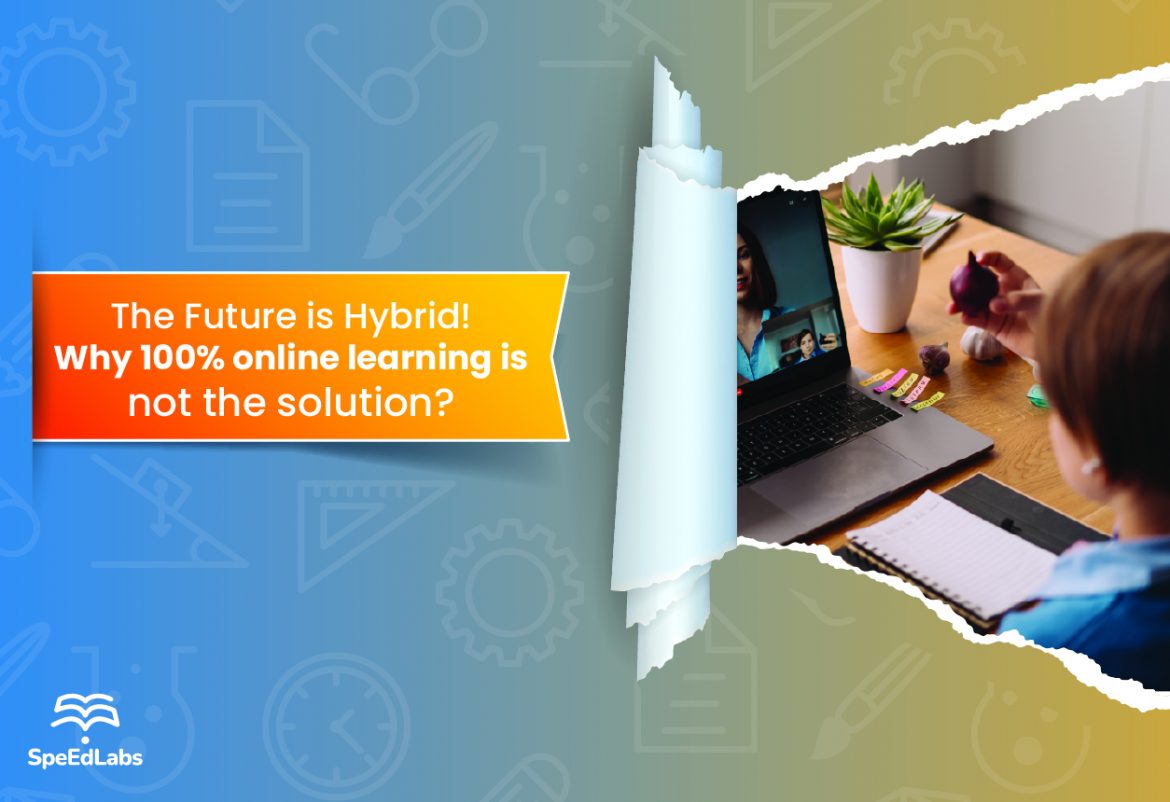We are well aware of the fact that studies have predominantly shifted to online classrooms during the pandemic.
But what remains unknown or confusing to date is whether online classes are beneficial or not? To choose Hybrid Learning or Online Classrooms? Are online classes better than offline? Should we prefer 100% online classes or Hybrid Models? How is the Hybrid Model better?
We have the answer!
Over 50% fail Class 11 test, Telangana to review the effectiveness of e-classes
Let’s ponder over these questions taking the example of what happened in Telangana.
After more than half of Intermediate students (Classes 11 and 12) failed the first-year or Class 11 exam, which results were released on Thursday, the Telangana Higher Education Department is assessing the effectiveness of its online classes. The pupils are currently in Class 12 or second year, having been promoted en masse in April due to Covid, which prevented the final test from being held in April.
Only 49% of students passed the Telangana State Board of Intermediate Education (TSBIE) test, which was held between October 25 and November 3. Students from private institutes who have better access to the Internet and digital devices performed better than those from public institutions. Many students at these junior colleges in remote areas failed all of their studies.
This clearly shows that 100% online learning is not effective.
What if the students are made to learn through Hybrid Models?
Blended learning, also known as Hybrid Learning, is an educational technique that mixes online instructional materials with traditional in-person classroom methods. It’s neither entirely virtual nor entirely digital. Both the teacher and the learner must be physically present, and the learner must have some control over time and speed.
In a Hybrid Learning approach, the virtual aspects should complement the in-person ones.
Is Hybrid Learning the future?
- While it is critical to allow students who learn best in the classroom to return to school every day – and there are clear benefits to regular in-person collaboration – schools that offer Hybrid Learning options can cater to a wider range of students, allowing more students to learn in the format that best suits them and creating a more equitable learning environment.
- Many hybrid students would almost certainly finish up as traditional students. They may live in a distracting atmosphere at home, or they may lack access to reliable internet or other learning resources.
They may simply prefer to learn in a group setting rather than on their own. Providing students with the choice of attending lessons online or afterwards watching a recording of the session allows everyone to learn in the method that best suits their interests and circumstances.
- In addition, the Hybrid Model has a variety of other advantages. How can we forget the prevailing Covid-19 threat? While the epidemic will ultimately pass (possibly, yes! ), the option to access classes from home or a dorm room means students can avoid spreading other ailments like the flu or cold around campus, and they won’t have to miss out on key teaching time because they’re unwell.
- These models also allow classes to continue even when the weather is bad, such as during winter storms. More instructional time is saved as a result of this. As a result, students can participate in necessary class time far more frequently than they could in a traditional school setting.
- Another alternative is distance learning, which allows students to complete their distance learning course (or possibly their entire education/degree) entirely online. For some students, this is excellent; nevertheless, distance learning options provide fewer opportunities for pupils to interact with their classmates and may overlook a student’s need to communicate and socialise.
Even at the college level, students require in-person learning at least some of the time to learn how to mingle, network, and collaborate in a variety of settings.
- With this in mind, Hybrid Learning provides students with the best of both worlds, allowing them to choose from a variety of effective and engaging learning options. The second issue is: what technology does a hybrid classroom require?
A look ahead
Hybrid classrooms aren’t going away anytime soon. They allow pupils to attend school from any location and create an equal learning environment for all students.
Students’ lives can become complicated, especially throughout their college years. They must juggle their studies, social lives, health, family relationships, and possibly part- or full-time work, among other things. Allowing students to attend class remotely or watch a recording of their classes allows them to stay on track academically despite their difficulties.
Students can now view lectures and even participate in live group collaboration from the comfort of their own homes, dorm rooms, or other remote locations, thanks to advances in classroom technology. More pupils will be able to acquire a high-quality education as a result of this chance.
Key Takeaways
Hybrid or Blended learning is here to say. If you’re interested in knowing more about Hybrid Learning and want to step ahead with the future of Hybrid Learning, you can visit www.speedlabs.in
Also published on Medium.
